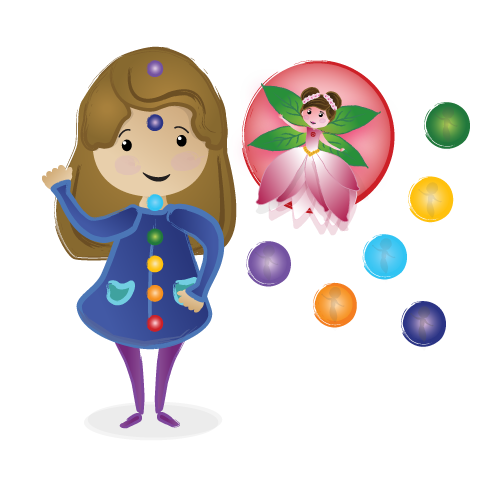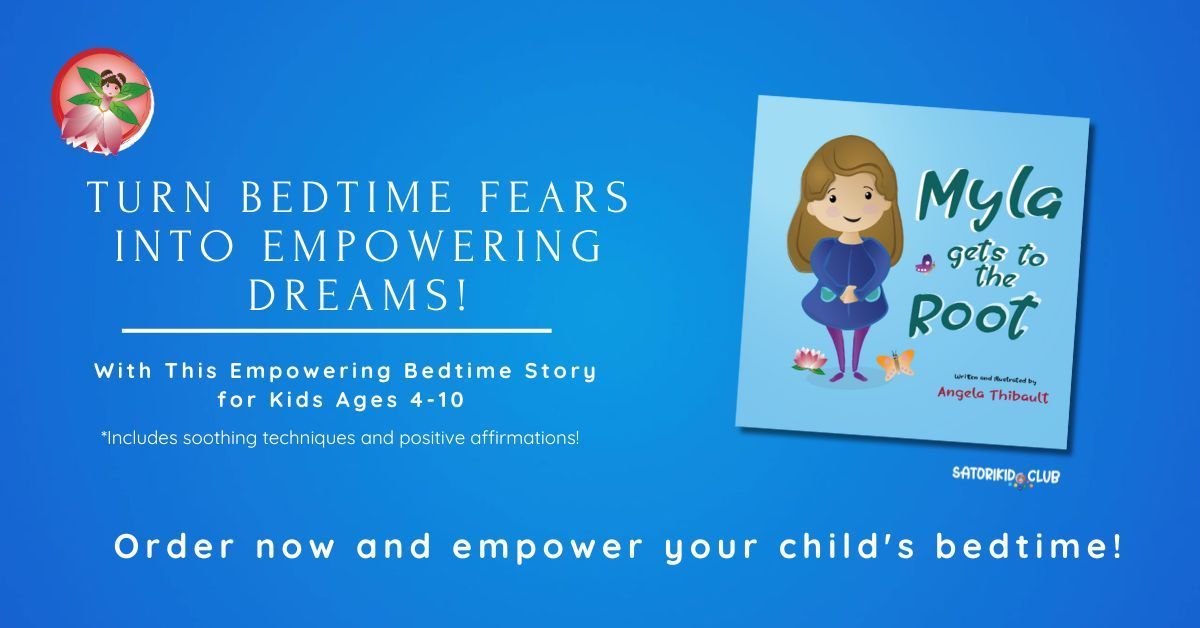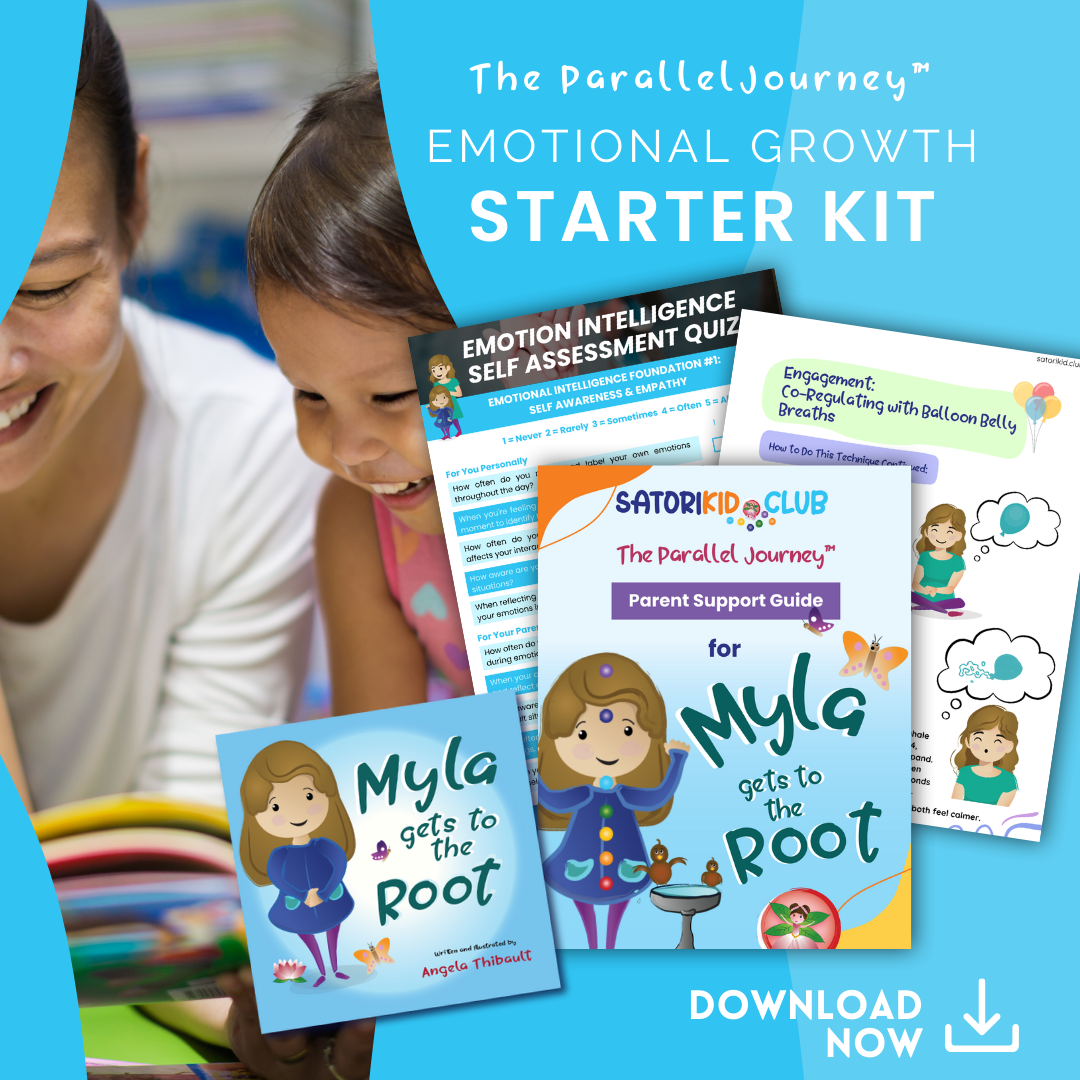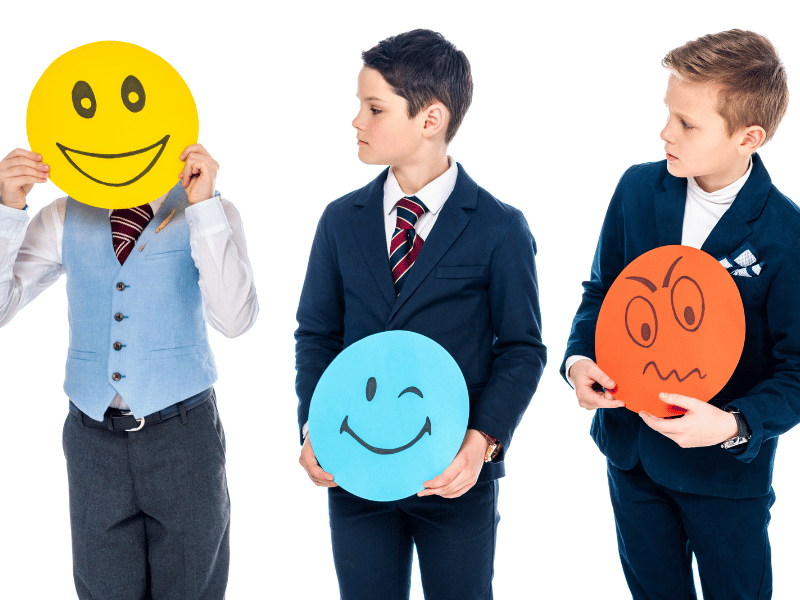Start your journey here
Nurturing Balance: Understanding the Dynamics of Underactive and Overactive Chakras in Young Children
All activities should be supervised by an adult.
Share

How to help your children maintain a harmonious energy flow.
Parenting is a journey filled with joy, challenges, and the constant quest for balance. Just like adults, children have energy centers within their bodies known as chakras. These energy wheels play a crucial role in their overall well-being. Let's look at the fascinating world of chakras, exploring the differences between underactive and overactive chakras in young children and how parents can foster a harmonious energy flow.
Understanding Chakras into the profound impact that chakras can have on the holistic well-being of children:
Chakras serve as intricate power stations within the body, akin to the control centers that regulate energy flow throughout the system. When spinning harmoniously, these energy wheels contribute to the overall balance of a child's physical, emotional, and spiritual dimensions. Each chakra is like a unique portal, channeling energy to specific areas and aspects of a child's being. It's a symphony of energy, and when all the instruments play in harmony, it creates a beautiful and balanced composition.
In physical well-being, chakras are vital in determining a child's energy levels, vitality, and overall health. For instance, a balanced root chakra provides a strong foundation, fostering a sense of safety and stability that directly influences a child's physical development. On the other hand, an imbalanced or underactive chakra may lead to a lack of vitality or an overactive one to restlessness.
Emotionally, chakras are critical players in shaping a child's inner landscape. An open and balanced heart chakra, for instance, enables a child to experience love, compassion, and empathy, forming healthy connections with family, friends, and the world around them. An imbalanced heart chakra, however, may hinder their ability to form meaningful relationships, leading to emotional struggles and challenges in understanding and expressing their feelings.
Spiritually, chakras are the bridges that connect a child's physical and emotional aspects to a broader sense of purpose and understanding. A well-aligned crown chakra, often associated with spiritual connection, allows a child to explore questions of meaning, purpose, and a connection to something greater than themselves. When this chakra is in harmony, it opens the door to a sense of wonder and awe, fostering a deep appreciation for the mysteries of life.
In essence, the chakra system in children is like a finely tuned instrument, playing a melody that resonates throughout their entire being. The awareness and understanding of these energy centers empower parents to nurture not just the physical health of their children but also their emotional and spiritual growth, creating a harmonious and balanced foundation for a vibrant and fulfilling life.
Underactive Chakras in Young Children:
Picture a little hamster wheel that's not spinning as it should—that's akin to an underactive chakra in your child. When a chakra is underactive, there's a lack of energy flow, which can manifest in various ways.
- Root Chakra (Muladhara): An underactive root chakra might result in feelings of insecurity or a lack of grounding. Children with an underactive root chakra may appear fearful, lack confidence, or struggle with a sense of stability.
- Sacral Chakra (Svadhisthana): This chakra governs creativity and emotional expression. When underactive, a child may struggle with expressing themselves, have difficulty forming emotional connections, or lack a sense of joy and playfulness.
- Solar Plexus Chakra (Manipura): An underactive solar plexus chakra can show up as low self-esteem and lacking confidence. Children may shy away from challenges, feeling a sense of powerlessness or inadequacy.
- Heart Chakra (Anahata): This chakra is the center of love and compassion. When underactive, a child may struggle with forming meaningful connections, display a lack of empathy, or experience difficulty expressing love.
- Throat Chakra (Vishuddha): An underactive throat chakra may result in communication challenges. Children may struggle to express themselves verbally, fear public speaking, or articulate their thoughts and feelings.
- Third Eye Chakra (Ajna): The third eye chakra governs intuition and imagination. An underactive third eye chakra might lead to a lack of imagination, difficulty concentrating, or an inability to trust one's instincts.
- Crown Chakra (Sahasrara): This chakra is linked to spiritual connection. When underactive, a child may struggle with a sense of purpose, feel disconnected from a higher power, or lack a broader perspective on life.
Overactive Chakras in Young Children:
Now, imagine that same hamster wheel, but it's spinning too fast this time—an overactive chakra. This scenario involves an excess of energy, and just like with underactive chakras, it can manifest in various ways.
- Root Chakra (Muladhara): An overactive root chakra may result in hyperactivity, impulsivity, or a child constantly seeking sensory stimulation. They may struggle with routine and have difficulty calming down.
- Sacral Chakra (Svadhisthana): When the sacral chakra is overactive, a child might display intense emotions, including mood swings or outbursts. They may be overly sensitive or have difficulties in forming healthy boundaries.
- Solar Plexus Chakra (Manipura): An overactive solar plexus chakra can lead to power struggles, stubbornness, or a child who seeks control in various situations. They may be overly competitive or need help with cooperation.
- Heart Chakra (Anahata): An overactive heart chakra may result in excessive neediness, clinginess, or an overwhelming desire to please others. Children with this imbalance may struggle to understand and assert their own needs.
- Throat Chakra (Vishuddha): If the throat chakra is overactive, a child may talk excessively, interrupt frequently, or struggle with listening to others. They may strongly desire to be heard but need help connecting through communication.
- Third Eye Chakra (Ajna): An overactive third eye chakra may lead to vivid dreams, a heightened sense of imagination, or difficulty distinguishing between reality and fantasy. Children may become overly absorbed in their inner world.
- Crown Chakra (Sahasrara): An overactive crown chakra can result in a child who is disconnected from the present moment, overly spiritualized, or resistant to practical aspects of life. They may struggle with grounding themselves in reality.

Balancing Chakras in Young Children:
Now that we've delved into the intricate dance between underactive and overactive chakras in children, the crux of fostering well-being is discovering the delicate equilibrium, like finding the sweet spot in a captivating melody. Balance is the heartbeat of a harmonious existence, where energy flows smoothly, and each chakra contributes to the symphony of overall health. It involves attuning to the unique needs of each energy center and understanding when to offer support and when to allow space for natural growth. This journey toward balance is a dynamic process, recognizing that children, like the ever-changing notes in a melody, evolve and respond to the ebb and flow of life. It's about creating an environment that nurtures the rooted stability of underactive chakras and the vibrant energy of overactive ones—a landscape where children can explore, express, and embrace the full spectrum of their being. In this quest for equilibrium, parents become the guiding orchestrators, tuning into the rhythm of their child's energy and supporting them in crafting a life that resonates with balance and vitality. Here are some practical tips for parents to help their children maintain a harmonious energy flow:
- Mindful Awareness: Pay attention to your child's behaviour and emotions. By being aware of any signs of imbalance, you can better address and support their needs.
- Grounding Activities: For an underactive root chakra, engage in grounding activities such as nature walks, gardening, or activities that foster a sense of stability.
- Creative Expression: Foster creativity and emotional expression for an underactive sacral chakra. Encourage activities like drawing, dancing, or imaginative play.
- Confidence Building: Boost confidence for an underactive solar plexus chakra through activities highlighting your child's strengths. Offer opportunities for them to take on challenges and build resilience.
- Love and Connection: Nurture love and connection for an underactive heart chakra. Create a loving and supportive environment, encourage empathy, and model healthy relationships.
- Effective Communication: Enhance communication skills for an underactive throat chakra. Encourage your child to express themselves through talking, writing, or other forms of creative expression.
- Imagination and Intuition: Cultivate imagination and intuition for an underactive third eye chakra. Engage in activities that stimulate creativity, such as storytelling, art, or exploring the world's wonders.
- Spiritual Connection: Foster a spiritual connection for an underactive crown chakra. This can include activities encouraging mindfulness, meditation, or exploring different spiritual traditions.
- Calming Practices: For an overactive root chakra, incorporate calming practices such as deep-breathing exercises, yoga, or quiet time to help your child find a sense of balance.
- Emotional Regulation: Teach emotional regulation for an overactive sacral chakra. Help your child identify and share their emotions in a healthy way, and provide tools for self-soothing.
- Encourage Collaboration: To foster cooperation and teamwork for an overactive solar plexus chakra, you can encourage team activities and group projects and teach the importance of working together.
- Active Listening: Cultivate active listening skills for an overactive throat chakra. Model effective communication and encourage your child to listen attentively to others.
- Balanced Screen Time: Establish balanced screen time limits for an overactive third eye chakra.
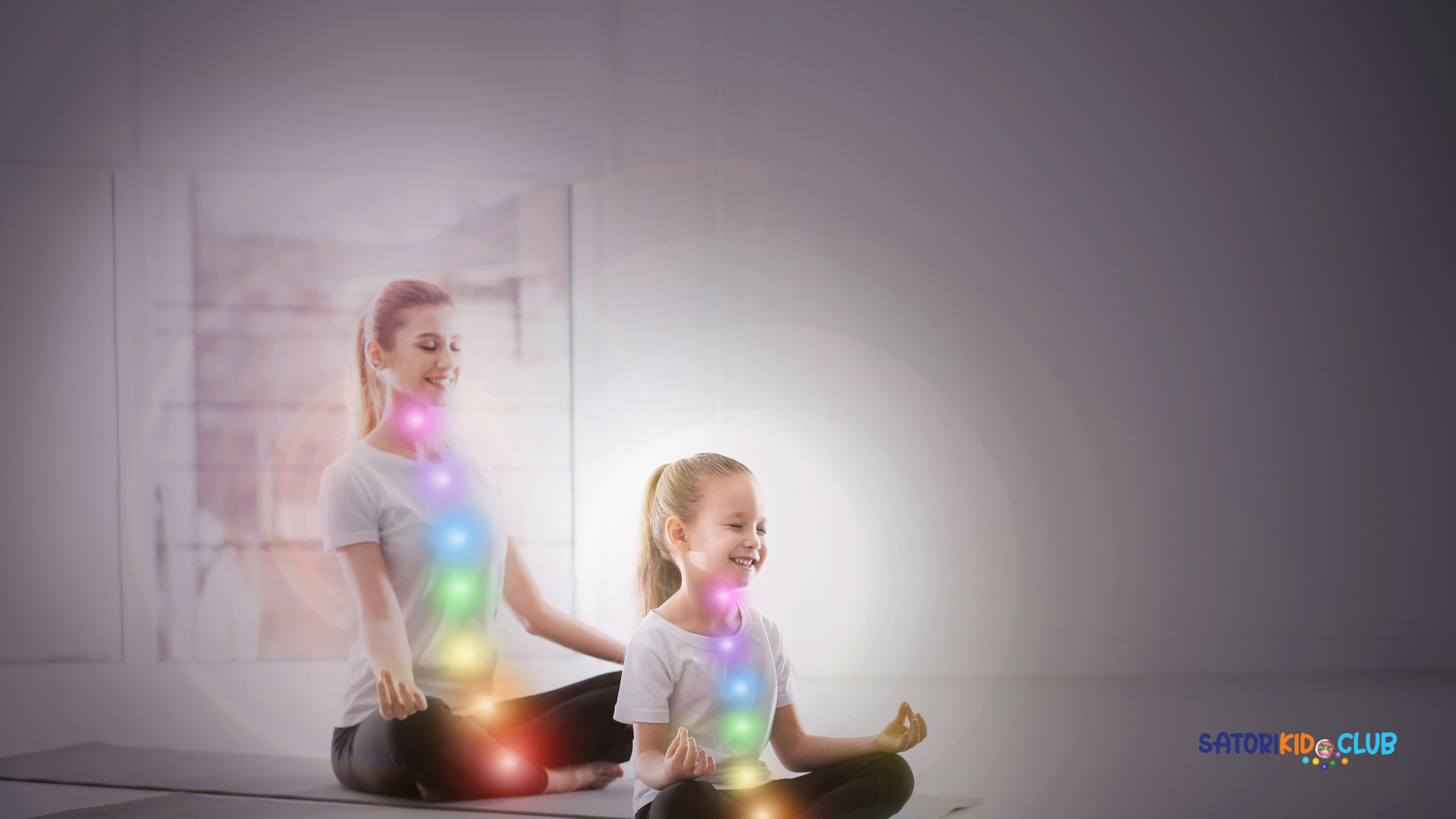
Conclusion
In the intricate tapestry of childhood, exploring chakras unveils a profound understanding of the interconnectedness between physical, emotional, and spiritual well-being. As we've navigated through the realms of underactive and overactive chakras, the essence lies in the pursuit of balance—a melody that resonates through the entire spectrum of a child's existence. The harmonious alignment of these energy centers becomes the compass guiding parents in fostering an environment where their children can flourish.
In this symphony of growth, parents are not mere spectators but active participants, tuning into the unique cadence of their child's energy. It's a journey of mindful awareness, where the subtleties of underactive chakras call for nurturing and support, while the exuberance of overactive ones invites gentle guidance. Striking this delicate balance involves embracing the inherent dynamism of childhood, acknowledging that the melody is ever-changing, and each note contributes to the evolving composition of a vibrant life.
As parents embark on this exploration, may they find solace in the understanding that their role as guiding orchestrators is not about perfection but about attunement. It's about creating spaces for creativity, connection, and self-discovery—allowing their children to dance freely in the rhythm of their energy. In this dance, may children grow into harmonious beings, equipped with the resilience to face life's challenges and the openness to embrace the beauty of their unique melody. The journey of balancing chakras in children is, ultimately, a celebration of the intricate, ever-unfolding masterpiece of childhood.
Embarking on the journey of balancing chakras with children can be an enchanting experience, and what better way to introduce the concept than through the delightful book, "Myla Gets to the Root" This engaging tale serves as a wonderful entry point for kids to understand the importance of the root chakra and its role in providing a strong foundation. Through Myla's adventures, children can discover the magic of this energy center in a playful and accessible manner. If you're eager to explore this captivating journey with your little ones, you can find "Myla Gets to the Root." under the shop now button here on the website. It's not just a book; it's a gateway to a world where imagination, learning, and the exploration of chakras come together to create a holistic and joyous experience for young minds.

Angela Thibault
Angela Thibault is a mother of two, a passionate children’s author, and the founder of Satori Kid Club and The Parallel Journey™.
